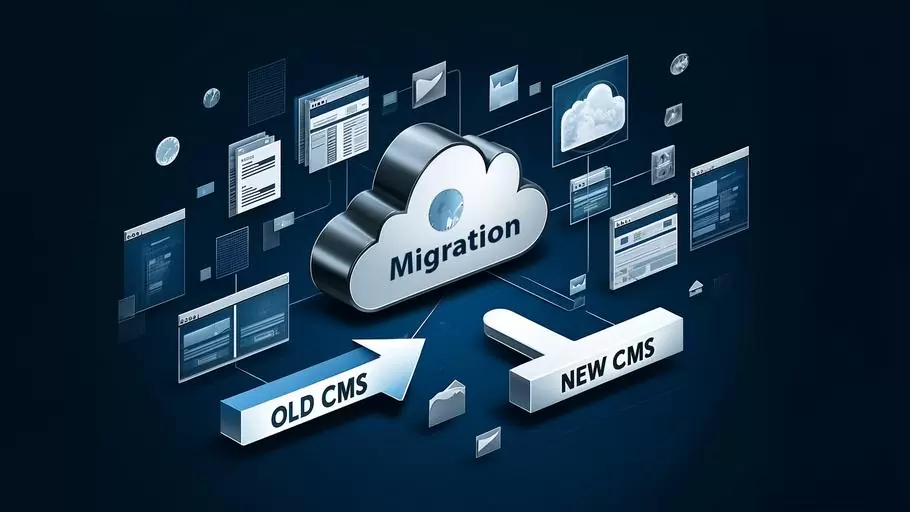Seamless Migration to Modern Web Solutions
 At 1Fix.me, we specialize in seamlessly migrating websites from any platform to our advanced web solutions powered by Next.js. Whether you’re moving from legacy systems or contemporary platforms, we provide a smooth transition to a more efficient, modern infrastructure.
At 1Fix.me, we specialize in seamlessly migrating websites from any platform to our advanced web solutions powered by Next.js. Whether you’re moving from legacy systems or contemporary platforms, we provide a smooth transition to a more efficient, modern infrastructure.Seamless Migration Process
Our migration process is designed to be seamless, integrating new solutions beneath your existing website’s framework. This method allows for a gradual phase-out of old code, minimizing disruptions to your operations and maintaining continuity for your users.
Overview of Data Migration Strategies
We ensure that data from your old site’s databases is meticulously transferred to new databases through direct database migration methods. If direct migration isn’t feasible, we utilize technological solutions to parse structured data directly from the website. In cases where the data is well-organized and non-repetitive with a logical DOM structure, we can also perform manual data transfers.
Direct Database Migration
This preferred method involves transferring data directly from your old site’s database to the new database. While this approach is fast and efficient, preserving the integrity of the data, it can also include complex transfers where data restructuring is necessary to fit the new CMS. This might involve modifying data schemas or transforming data formats to ensure compatibility and functionality within the new system.
Parsing Structured Data from the Website
If direct database migration is not feasible, perhaps due to compatibility issues or access restrictions, we turn to extracting data directly from the website. This process involves parsing structured data from web pages with a repetitive and consistent DOM structure. We utilize automated scripts or tools to systematically read and extract this data, which is particularly valuable when direct database access is restricted or unavailable.
Manual Data Transfers
When the website lacks a repetitive or consistent DOM structure, manual data transfer may be necessary. This labor-intensive method involves manually selecting and transferring data to ensure the accuracy and integrity of the transfer, especially when automated methods might compromise the detail or context of the data. Manual transfer is essential for handling complex data layouts or when specific, valuable data must be meticulously preserved.
Handling Non-Supportive CMS Systems
For CMS systems that don’t support seamless migration, such as proprietary platforms, we can segment your website’s content into manageable parts. These segments, like blog posts, catalogs, or e-commerce platforms, can then be individually moved to subdomains as part of a structured migration strategy.
Partial Migration Development
We offer the development of partial migrations when it’s practical and technically feasible. Platforms like Shopify allow frontend connections via API, and we can also develop custom API services to connect new frontends with old CMS systems. This approach is particularly beneficial for systems with extensive internal infrastructure, such as CRMs or other auxiliary APIs, ensuring business operations continue smoothly post-migration.
SEO Considerations During Migration
During the migration process, site structure changes frequently occur, which can potentially impact search engine rankings. To mitigate this, we implement proper redirects from old pages to the new ones, ensuring that there is no loss in site visibility and preventing users from encountering 404 error pages. This approach helps maintain the SEO value of the old URLs.
Special attention is given to the SEO structure of the website pages. We ensure that essential SEO elements such as Title tags, Meta Descriptions, and image alt attributes are correctly implemented. Moreover, we integrate structured data using standards like Open Graph and Schema.org to enhance the visibility and context of the pages in search engine results. For different types of pages—whether they are blog posts, service pages, product pages, or personal profiles—we use Schema.org to clearly communicate the purpose of each page to search engines, including elements like reviews.
Additionally, for local businesses, we implement Schema.org’s LocalBusiness markup to convey critical information about the business and its geographical area of operation, further optimizing the site for local SEO.
Client Engagement and Strategy Development
Our migration process begins with a comprehensive consultation to understand your specific needs. We then delve into your current website’s structure to develop a tailored action plan, prioritizing critical issues first and addressing less critical issues progressively.
Long-Term Support and Technology Stack Flexibility
Our solutions leverage modern technologies like Strapi, Next.js, TypeScript, and JavaScript, ensuring long-term support and scalability. If necessary, we’re also open to considering other technology stacks to achieve optimal results tailored to your needs.
Conclusion
Migrating to modern platforms like WordPress, Strapi, and Next.js not only enhances your web presence but also positions your digital operations for future growth and innovation. Contact us today for a detailed roadmap to transform your web applications with our cutting-edge solutions.



